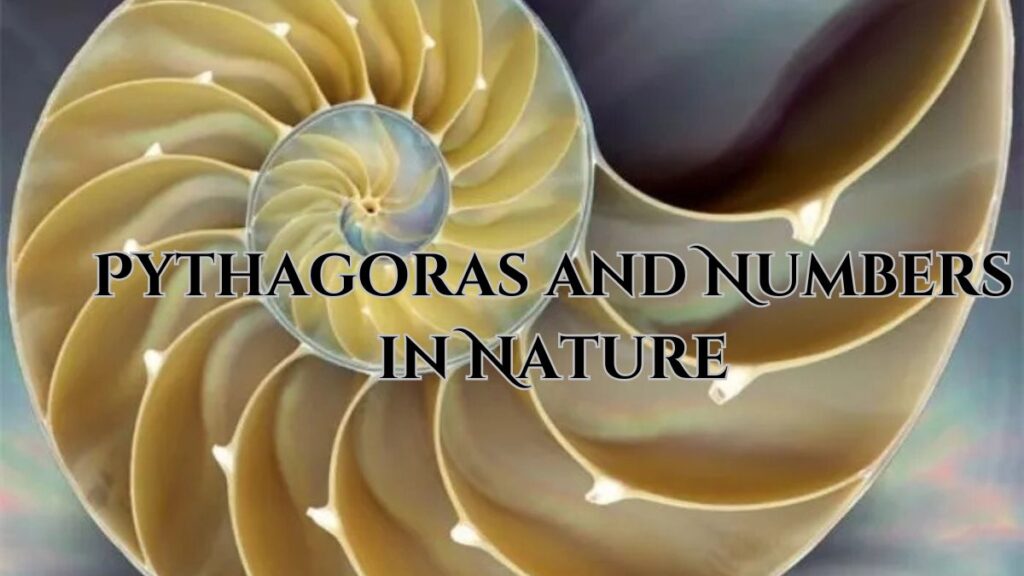Nature’s designs are far from random—they are mathematical masterpieces waiting to be decoded. Pythagoras, the ancient Greek philosopher and mathematician, believed that numbers hold the key to understanding the universe. His teachings on numbers continue to inspire a deeper appreciation for the intricate patterns and symmetry evident in the natural world. From spiral galaxies to the veins of leaves, the link between Pythagoras and numbers in nature remains a testament to the timeless union of science and beauty.
The Philosophy of Pythagoras
Pythagoras was not just a mathematician but also a philosopher who saw numbers as divine. His school of thought, known as Pythagoreanism, emphasized the belief that numbers form the essence of everything. For Pythagoras, numbers were more than tools for measurement; they were the language of nature itself. He famously proclaimed, “All is number,” highlighting his belief in the cosmic importance of mathematics.
Pythagoras’ fascination with numbers laid the foundation for understanding mathematical relationships in natural phenomena. This philosophy eventually influenced studies of geometry, proportions, and patterns that we still observe in nature today.
The Fibonacci Sequence in Nature
The Fibonacci sequence, a series of numbers where each number is the sum of the two preceding ones, is one of the most prominent examples of Pythagoras’ influence in nature. While Pythagoras himself didn’t discover it, his philosophical approach to numbers paved the way for such revelations.
This sequence manifests in countless natural forms:
- Spiral Shells: The nautilus shell is an iconic example, with its growth following the Fibonacci spiral.
- Sunflower Seeds: The arrangement of seeds in sunflowers follows Fibonacci spirals, optimizing space and ensuring efficient seed packing.
- Pinecones: The scales of pinecones spiral in a Fibonacci pattern, balancing growth and structural stability.
The Golden Ratio and Nature’s Perfection
The golden ratio, often denoted by the Greek letter φ (phi), is another mathematical principle linked to Pythagoras and numbers in nature. This irrational number, approximately 1.618, appears in the proportions of everything from DNA molecules to human faces.
- Human Anatomy: The proportions of the human body, such as the ratio of forearm to hand length, often align with the golden ratio.
- Flower Petals: Many flowers have petals arranged in quantities that correspond to the golden ratio. For instance, lilies have three petals, buttercups have five, and daisies often display 21 petals.
- Galaxies: The spiral arms of galaxies, like the Milky Way, follow the golden ratio, creating a sense of harmony and balance in the cosmos.
Symmetry in Nature
Symmetry is another mathematical phenomenon linked to Pythagoras’ philosophy. From the bilateral symmetry of animals to the radial symmetry of flowers, nature uses symmetry to create both aesthetic beauty and functional design.
- Snowflakes: Each snowflake is a unique example of six-fold symmetry, showcasing nature’s ability to combine mathematics and art.
- Butterflies: The symmetry of butterfly wings exemplifies balance and precision, reflecting mathematical harmony in living organisms.
- Crystals: The geometric patterns of crystals, such as quartz and salt, are formed through symmetrical arrangements of atoms.
Pythagoras and Music in Nature
Pythagoras also explored the relationship between numbers and sound, laying the foundation for the mathematical study of harmony in music. He discovered that musical notes correspond to simple numerical ratios, such as 2:1 for an octave or 3:2 for a perfect fifth.
This connection extends to nature, where sounds and vibrations follow mathematical principles:
- Birdsong: Birds produce melodies that often follow harmonic patterns, creating natural music.
- Ocean Waves: The rhythmic crashing of waves reflects periodic mathematical patterns influenced by tides and wind.
- Heartbeat: The human heartbeat, while seemingly random, maintains rhythmic patterns that can be measured mathematically.
Fractals in Nature
Fractals are infinitely complex patterns that repeat at every scale, and they are another example of Pythagoras and numbers in nature. These self-replicating structures are both aesthetically mesmerizing and highly efficient.
- Tree Branches: The branching patterns of trees follow fractal geometry, optimizing light absorption and nutrient transport.
- Rivers: The meandering paths of rivers and their tributaries exhibit fractal patterns.
- Clouds: The fluffy, irregular shapes of clouds are governed by fractal mathematics.
Fractals demonstrate how mathematical principles underpin even the most chaotic elements of the natural world.
The Role of Geometry in Nature
Geometry, deeply tied to Pythagoras’ teachings, is evident in the structural designs of countless natural formations. The study of shapes and spatial relationships reveals how nature uses geometry for efficiency and beauty.
- Honeycombs: The hexagonal pattern of honeycombs is a perfect example of geometric efficiency, maximizing storage while minimizing material use.
- Spiderwebs: Spiderwebs showcase intricate geometric designs, balancing strength and flexibility.
- Cacti: The ribs and spines of cacti follow geometric patterns that aid in water conservation and heat regulation.
Modern Applications of Pythagoras’ Discoveries
Pythagoras’ influence extends beyond nature and into modern science, architecture, and technology. By studying the mathematical principles evident in nature, researchers and engineers continue to innovate in various fields.
- Biomimicry: Architects and designers draw inspiration from natural patterns, such as the structure of leaves or the aerodynamic shape of birds, to create efficient and sustainable designs.
- Medicine: The golden ratio and fractals help medical professionals analyze structures in the human body, such as blood vessels and lung branching.
- AI and Algorithms: Fractal mathematics and symmetry are used in computer algorithms to simulate natural phenomena, from weather patterns to realistic graphics in video games.
Conclusion
Pythagoras and numbers in nature unveil the universe’s underlying mathematical blueprint. From Fibonacci spirals to the golden ratio, the natural world is a living testament to Pythagoras’ belief that “all is number.” These patterns not only reveal the elegance of nature’s design but also inspire modern science and art, bridging the gap between ancient philosophy and contemporary understanding. By exploring the intricate relationships between numbers and nature, we gain a deeper appreciation for the harmonious beauty that surrounds us.
FAQs
What did Pythagoras believe about numbers in nature?
Pythagoras believed that numbers are the essence of the universe and that mathematical relationships govern the natural world’s harmony and order.
What is the Fibonacci sequence, and where is it found in nature?
The Fibonacci sequence is a series of numbers where each number is the sum of the two preceding ones. It appears in spirals, sunflowers, pinecones, and more.
How is the golden ratio connected to nature?
The golden ratio appears in the proportions of living organisms, from the arrangement of flower petals to the structure of galaxies and DNA.
What are fractals, and how do they relate to nature?
Fractals are infinitely complex patterns that repeat at every scale. They are found in tree branches, rivers, clouds, and other natural formations.
How did Pythagoras influence modern science?
Pythagoras’ ideas on numbers and patterns laid the foundation for advancements in geometry, music, architecture, and biomimicry in modern science.







